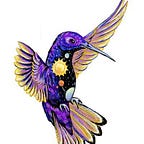Eat Your Veggies by Signe Nettum
August 2023 | Utopia Science Fiction Magazine
Sojourner; Spirit; Opportunity; Curiosity; Perseverance. The names of Mars rovers instill a sense of adventure when they are spoken. Mission satellites that take pictures, such as Pioneer, Cassini, and Stardust, invoke wonder. All of these are important pieces of machinery that have expanded humanity’s view of outer space. We are no longer confined to observing Earth. We can now see beyond the stars.
However, one machine receives little fanfare, yet is just as important — if not more — than the rest.
Veggie: a vegetable grow box aboard the International Space Station.
Veggie was built by ORBITEC in Madison, Wisconsin, under the NASA Small Business Innovation Research (SBIR) program. It was launched from the Kennedy Space Center on April 18, 2014, and installed on the International Space Station on May 7, 2014. As of 2019, a total of 23 different plants and/or gardens have been grown within Veggie, ranging from 11 different types of lettuce, radishes, algae, and zinnia flowers.
Veggie provides more than fresh crops to astronauts. It gives them opportunities for recreation and relaxation. The American Institute for Stress has reported* that gardening enhances mindfulness and reduces cortisol, the hormone produced during stressful times. Astronauts themselves have stated in anecdotal testimonies that the act of caring for the vegetables within Veggie has increased their joy toward the plants they grow on board the International Space Station.
With this machine, astronauts can grow clean and healthy vegetables aboard their spaceship. This ability to supplement food sources for astronauts is a revolutionary solution to long-term space missions. A long, arduous journey to Mars takes around nine months. This is longer than the trip to the moon, which is only three days. Nutrients in vitamins and packaged food degrade over time. In addition, too much food is packed and often goes to waste. Space within a rocket is valuable and food that degrades over time is not viable.
Weight is a big factor when it comes to certain parts of a space flight. If less weight is taken up by food packages and is instead replaced by lightweight seeds that can later grow into plants, it opens up more opportunities to allow different equipment on board the various shuttles that go between Earth and the International Space Station.
The International Space Station can have their supplies replenished due to their proximity to Earth. It takes anywhere between 6 to 24 hours to reach the International Space Station depending on location and mission. As plans for future space travel develop, it will be more difficult to schedule visits to bring fresh food for the astronauts.
The solution? Veggie, and the vegetables grown within. Vegetables grown through Veggie are fresh in their zero-gravity atmosphere. They are also able to continue growing thanks to careful monitoring by those aboard the International Space Station. Veggie itself only takes roughly 70 Watts to run its lights, fans, and to control its electronics.
Scientists at the Kennedy Space Center keep track of the plants in Veggie and grow their own alongside as a control group to monitor similarities and eliminate possible variables that result from zero gravity growth. Studies made through Veggie have improved studies about plant growth on Earth. This is an important implication for boosting plant production on our planet; food deserts could be a thing of the past as scientists study plants in less than ideal environments.
Currently, there are two Veggies aboard the International Space Station, as well as the Advanced Plant Habitat. The Plant Habitat is a fully automated facility that conducts plant bioscience research. Unlike Veggie, which needs astronauts to check in and adjust the plants growing inside, Plant Habitat requires little intervention during its programs. It can study and conduct experiments on the plants for up to 135 days.
Veggie grows its plants with passive wicking and a plant pillow; this process of growing is also used on Earth. It is a basic form of hydroponics. Wicks are connected to a water reservoir and the plants. When a plant requires water, it passes up through the wick into the awaiting plant. The plant pillows that hold these plants are made of Kevlar coated in Teflon. They each contain a growth medium and control the release of fertilizer and water to the plant. Future plans include having the seeds rest on tape or film so that the astronauts can make decisions over what to grow at a certain time.
Alongside growing vegetables and fruits, Veggie can grow flowers. On Nov. 16, 2015, Astronaut Kjell Lindgren planted zinnia seeds into Veggie. Zinnia flowers have a longer growth period and a flowering stage, compared to lettuce, which is a leaf vegetable. Zinnia is a precursor to fruits and vegetables that have a flowering period, such as tomatoes, before they set fruit. Astronauts would need to pollinate the flowering plants by hand to ensure proper growth.
Thanks to this discovery, astronauts are capable of growing more than root vegetables. Soon, vegetables such as cucumbers can join cauliflower on the menu. The International Space Station is gathering seeds to one day produce a salad completely grown in space.
________________________ — — — — — ______________________________
- Boyd, Danielle. “How Can Your Garden Reduce Your Stress Levels?” The American Institute of Stress, AIS, 2 Apr. 2019, www.stress.org/garden-reduce-stress.
Originally published in the August 2023 issue of Utopia Science Fiction Magazine.
Signe Nettum is a graduate from the University of Iowa. She got in trouble in middle school for reading and writing instead of doing my math homework. Her English teacher gave her an ultimatum: either write an extra book report about the book she was reading in class instead of the assigned one or write a book through NaNoWriMo.
